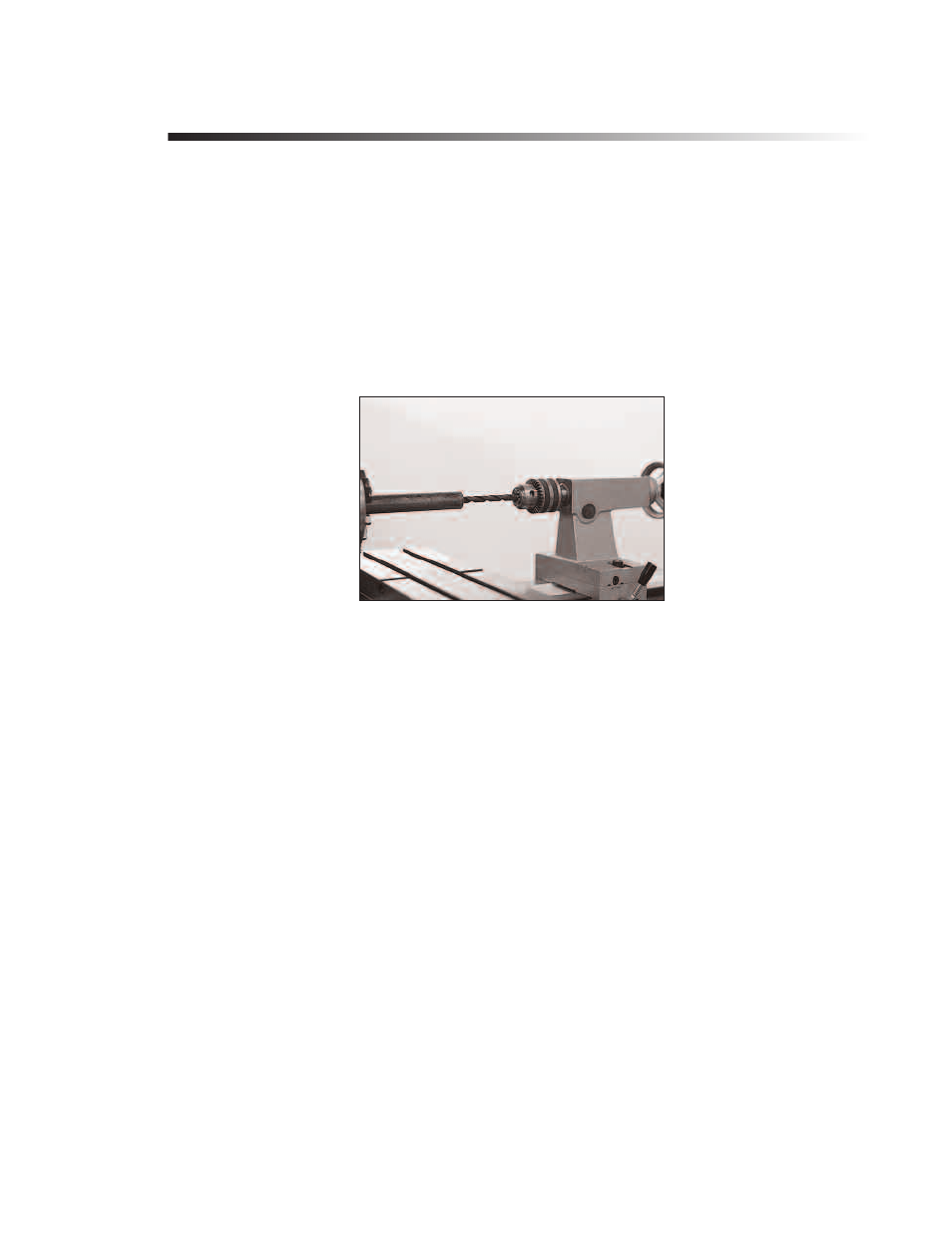Chapter 14, Lathe drilling and boring – Smithy Midas 1220 LTD User Manual
Page 65

Chapter 14
Lathe Drilling and Boring
You can lathe drill on the MI-1220 LTD in two ways, holding the drill stationary and
revolving the workpiece, or holding the workpiece stationary and revolving the drill.
Holding the drill stationary in a tailstock chuck gives a straighter hole (Figure 14.1).
Without changing setup and re-centering, the work is ready for any succeeding
operations, such as boring and internal threading. In all lathe drilling operations, keep the
drill sharp and properly ground. This is essential for obtaining a straight, accurate hole.
Figure 14.1 Holding the drill stationary in the tailstock chuck gives a straighter hole.
With HSS drills, operating speeds are not as critical as with carbon-steel drills High speeds
can quickly "burn" a carbon-steel drill. The number-of-feet-per-minute rule applies to
drills even more than to other cutting edges because there is practically no air cooling of
the point after it enters the hole. The larger the drill, the greater the number of
peripheral feet cut per revolution. That is why you should use a slower drilling speed. If
no drilling speed data are available, it's generally safe to run drills under 1/4" diameter at
up to 750 rpm and drills up to 1/2" diameter at 500 rpm, with larger drills at
proportionately slower speeds.
With the workpiece in the headstock and the drill in the tailstock chuck, feed the drill into
the workpiece by advancing the tailstock ram. Do this by turning the tailstock handwheel.
Make a locating center for the drill point, or even a countersunk center for large
diameters, to keep the drill from creeping.
Reaming
When a hole must be accurate to 0.002" or less, drill it slightly undersized (0.010" to
1/64" on small diameters and 1/64" to 1/32" on holes 1" to 2" in diameter). Then ream
it either by hand or in the lathe. Lathe reaming is usually done with solid reamers held in
a tailstock chuck or with a taper shank that fits the tailstock ram in place of the tailstock
center. Use slow speeds and feed the reamer slowly and evenly into the workpiece. Be
sure the reamer teeth are free of burrs and chips.
14-1
Or Visit www.smithy.com